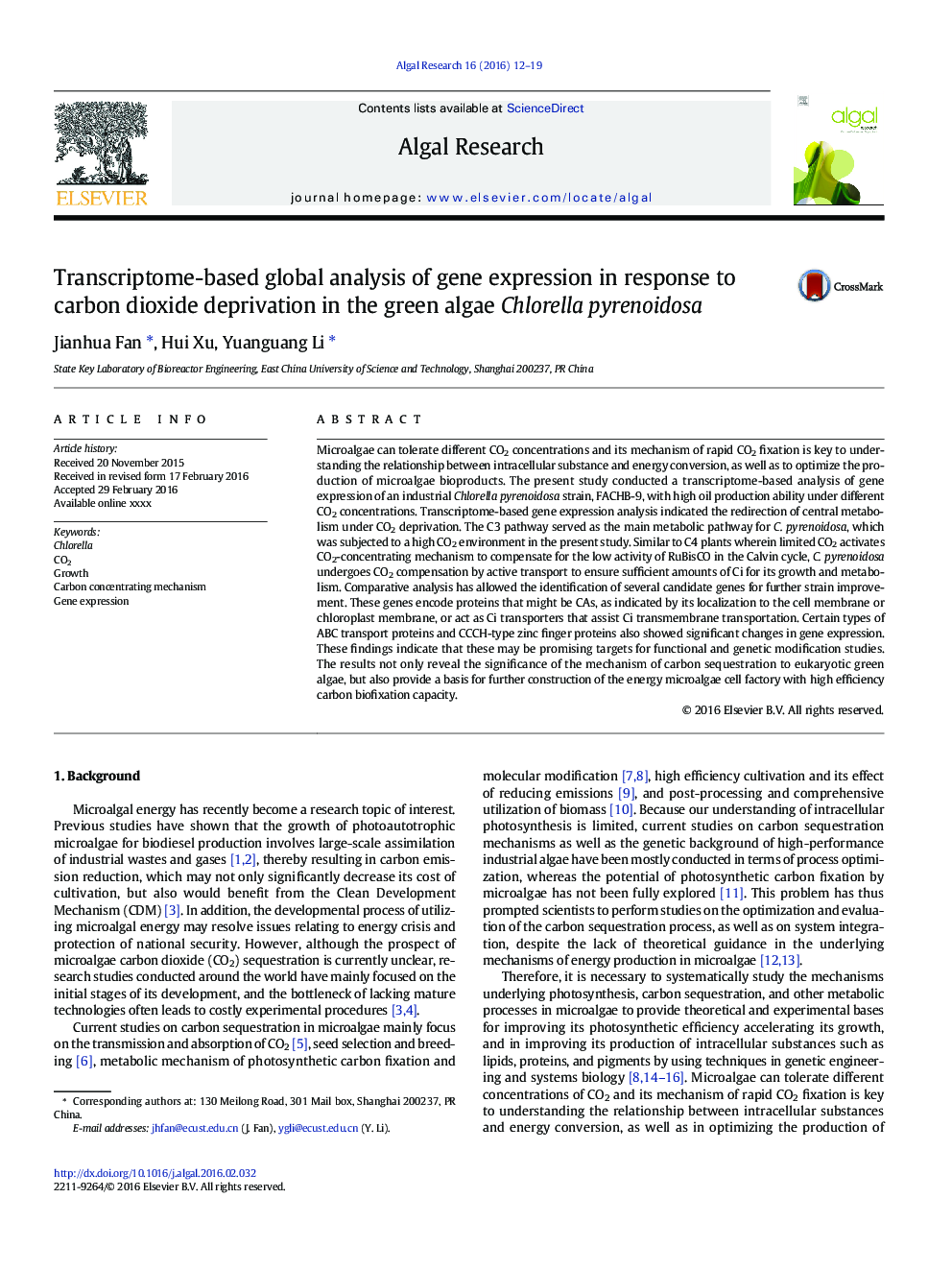| Article ID | Journal | Published Year | Pages | File Type |
|---|---|---|---|---|
| 8086965 | Algal Research | 2016 | 8 Pages |
Abstract
Microalgae can tolerate different CO2 concentrations and its mechanism of rapid CO2 fixation is key to understanding the relationship between intracellular substance and energy conversion, as well as to optimize the production of microalgae bioproducts. The present study conducted a transcriptome-based analysis of gene expression of an industrial Chlorella pyrenoidosa strain, FACHB-9, with high oil production ability under different CO2 concentrations. Transcriptome-based gene expression analysis indicated the redirection of central metabolism under CO2 deprivation. The C3 pathway served as the main metabolic pathway for C. pyrenoidosa, which was subjected to a high CO2 environment in the present study. Similar to C4 plants wherein limited CO2 activates CO2-concentrating mechanism to compensate for the low activity of RuBisCO in the Calvin cycle, C. pyrenoidosa undergoes CO2 compensation by active transport to ensure sufficient amounts of Ci for its growth and metabolism. Comparative analysis has allowed the identification of several candidate genes for further strain improvement. These genes encode proteins that might be CAs, as indicated by its localization to the cell membrane or chloroplast membrane, or act as Ci transporters that assist Ci transmembrane transportation. Certain types of ABC transport proteins and CCCH-type zinc finger proteins also showed significant changes in gene expression. These findings indicate that these may be promising targets for functional and genetic modification studies. The results not only reveal the significance of the mechanism of carbon sequestration to eukaryotic green algae, but also provide a basis for further construction of the energy microalgae cell factory with high efficiency carbon biofixation capacity.
Related Topics
Physical Sciences and Engineering
Energy
Renewable Energy, Sustainability and the Environment
Authors
Jianhua Fan, Hui Xu, Yuanguang Li,
